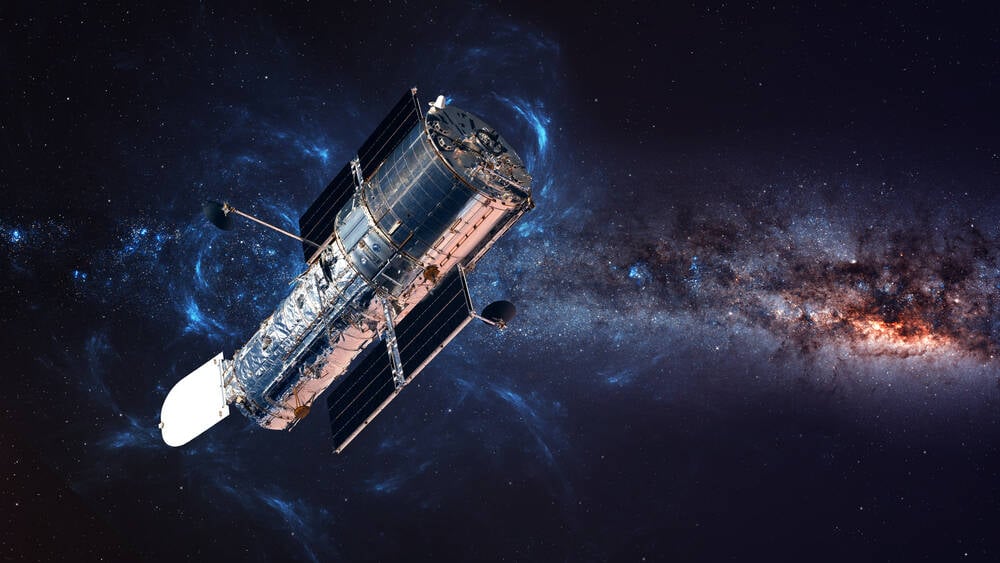
Researchers have developed software they estimate will be at least 10 times more effective than existing algorithms at detecting the pesky satellite trails increasingly popping up on Hubble Space Telescope images.
The team at Baltimore's Space Telescope Science Institute (STScI) also claim their software identifies roughly twice as many trails as other studies.
"We have a toolbox of things that people use to clean Hubble data and calibrate it. And our new application is another tool that will help us make the best out of every Hubble exposure," said Dave Stark, STScI staff scientist.
The proliferation of space hardware might be good for telecommunications, defense and other industries, but it has astronomers aghast at the havoc it can wreak with the images produced by their big-budget telescopes.
For example, when the $10 billion Hubble Space Telescope was launched in 1990, there were about 470 artificial satellites orbiting Earth. Ten years later that had doubled and by 2023, the rising number has grown almost exponentially to nearly 8,000 satellites. Now satellite photobombs affect around one in 10 images from the first-generation space telescope, although the trail is typically so thin that less than 0.5 percent of a single exposure might be affected. Hubble sits in a low orbit, so many satellites circle the Earth at a higher altitude than the space telescope.
According to a study being presented this week at the 242nd meeting of the American Astronomical Society, the new Radon Transform software is "sensitive to trails with average brightness as low as ∼ 0.1 times the background noise, although the sensitivity is dependent on the trail length and will decrease towards the corners of images."
"Our algorithm is approximately an order of magnitude more sensitive than the current algorithm offered by the Advanced Camera Survey team to identify satellite trails," the researchers said.
Meanwhile, by applying the tool to historic Hubble data taken between 2002 and 2022, the team found satellite trail contamination has increased by approximately a factor of two in the last two decades, although there was no evidence of a corresponding change in trail brightness.
The result confirms the findings of a study published earlier this year. It found increasing interference with astronomical images caused by commercial satellites, adding to concern over the effects of the private space industry on science.
Using deep learning algorithms to scan historic images taken by the Hubble Space Telescope between 2002 and 2021, researchers found 2.7 ± 0.2 percent of images with a typical exposure time of 11 minutes contained at least one satellite trail.
But over that period, the likelihood of a space hardware photobomb has increased sharply. That means satellite fraction for the Advanced Camera Survey/Wide-Field Channel (ACS/WFC) affected increased from 2.8 ± 0.2 percent in 2002-2005 to 4.3 ± 0.4 percent in 2018-2021, for example.
However, the team behind the Radon Transform tools has worked to help clear up satellite interference. Since images are typically assembled from multiple exposures on the same celestial target, satellite photobombs might only appear in one frame. The software can be used to pick out affected images and flag them.
"When we flag them, we should be able to recover the full field of view without a problem, after combining the data from all exposures," said Stark in a statement.
Science - Latest - Google News
June 13, 2023 at 09:31PM
https://ift.tt/QldVDKP
Software picks out more satellite photobombs in Hubble image - The Register
Science - Latest - Google News
https://ift.tt/v0JWcFN
https://ift.tt/tbowPu5
Bagikan Berita Ini

















0 Response to "Software picks out more satellite photobombs in Hubble image - The Register"
Post a Comment